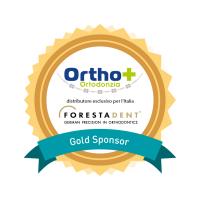Abstract
Advanced Pediatric Oral Surgery: a New Challenge for Dentists
by Barone Roberto
This seminar will deal with pediatric oral surgery and in particular with the number and position anomalies of permanent teeth in the growing patient. The typical pathologies of the developmental age, the peculiarities of anesthesia, the indications and the inspiring principles of the surgical techniques will be discussed. Pathologies include infraocclusion of primary teeth, impacted supernumerary teeth, displacement of germs of permanent teeth by dentigerous cysts or keratocysts. Local and regional anesthesia should be delivered without any pain: this is quite possible provided adequate skills and techniques are employed. Optimal surgical treatment planning requires sound indications, adequate timing and updated techniques, exploiting the natural potential for tissue repair and regeneration. Slow anesthesia and rapid surgery is the basic principle to obtain the cooperation of little patients by averting pain and tiredness. Particular attention will be paid to the timely recognition of pathologies of the pediatric age because the best results may be obtained when optimal timing can be employed to obtain maximum cooperation among orthodontist, surgeon, children and their families.
Learning Objectives
After this lecture, you will be able to recognize the specific conditions of developmental age
After this lecture, you will be able to optimize procedures of local anesthesia in children
After this lecture, you will be able to select priorities in operative technique
Advanced Pediatric Oral Surgery: a New Challenge for Dentists
by Clauser Carlo and Baleani Angelo
This seminar will deal with pediatric oral surgery and in particular with the number and position anomalies of permanent teeth in the growing patient. The typical pathologies of the developmental age, the peculiarities of anesthesia, the indications and the inspiring principles of the surgical techniques will be discussed. Pathologies include infraocclusion of primary teeth, impacted supernumerary teeth, displacement of germs of permanent teeth by dentigerous cysts or keratocysts. Local and regional anesthesia should be delivered without any pain: this is quite possible provided adequate skills and techniques are employed. Optimal surgical treatment planning requires sound indications, adequate timing and updated techniques, exploiting the natural potential for tissue repair and regeneration. Slow anesthesia and rapid surgery is the basic principle to obtain the cooperation of little patients by averting pain and tiredness. Particular attention will be paid to the timely recognition of pathologies of the pediatric age because the best results may be obtained when optimal timing can be employed to obtain maximum cooperation among orthodontist, surgeon, children and their families.
Learning Objectives
After this lecture, you will be able to recognize the specific conditions of developmental age
After this lecture, you will be able to optimize procedures of local anesthesia in children
After this lecture, you will be able to select priorities in operative technique












